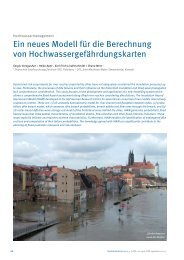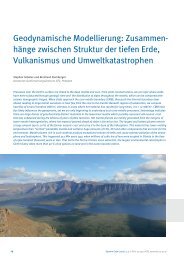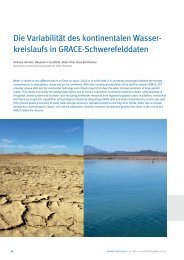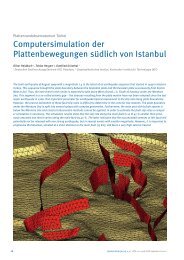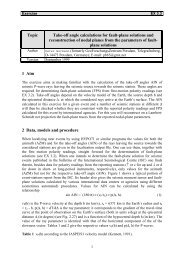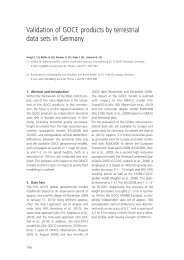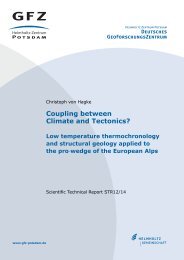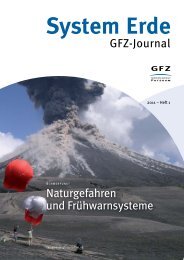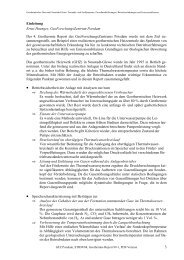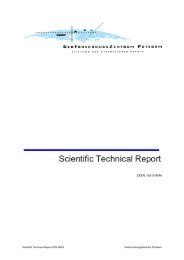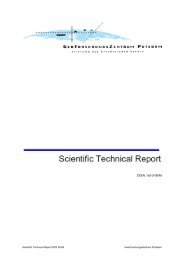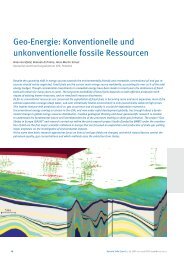2 Seismic Wave Propagation and Earth models
2 Seismic Wave Propagation and Earth models
2 Seismic Wave Propagation and Earth models
You also want an ePaper? Increase the reach of your titles
YUMPU automatically turns print PDFs into web optimized ePapers that Google loves.
2. <strong>Seismic</strong> <strong>Wave</strong> <strong>Propagation</strong> <strong>and</strong> <strong>Earth</strong> <strong>models</strong><br />
waves. While the velocities for continental Rayleigh waves vary in the period range from<br />
about 15 <strong>and</strong> 30 s only from 2.9 to 3.3 km/s, they vary much more in oceanic areas (from<br />
about 1.5 to 4.0 km/s within the same period range. Consequently, LR wave trains from travel<br />
paths over continental areas are shorter <strong>and</strong> look more clearly dispersed because the various<br />
periods follow each other at shorter time differences (e.g., Figures 1d <strong>and</strong> 5a in DS 11.2). In<br />
contrast, LR wave trains with dominatingly oceanic travel paths are much longer with almost<br />
monochromatic oscillations over many minutes (Fig. 2.11). Actually, the discovery of<br />
different surface-wave velocities along continental <strong>and</strong> oceanic paths were in the 1920s the<br />
first indication of the principle structural difference between oceanic <strong>and</strong> continental crust.<br />
Fig. 2.10 Cross-section through the crust along 40° northern latitude. Note the different<br />
signatures for the upper (granitic), intermediate (dioritic) <strong>and</strong> lower (mafic) continental crust<br />
<strong>and</strong> the basaltic oceanic crust. The crustal base is termed “Moho” (according to its discoverer,<br />
the Croatian seismologist Andrija Mohorovičić). The P-wave velocity increases at the Moho<br />
from about 6.5-6.8 km/s to 7.8-8.2 km/s. The continental crust is about 25 to 45 km thick<br />
(average about 35 km) <strong>and</strong> has “roots” under young high mountain ranges which may reach<br />
down to nearly 70 km. The oceanic crust is rather thin (about 8 to 12 km) with a negligible<br />
upper crust (courtesy of Mooney <strong>and</strong> Detweiler, 2002).<br />
Fig. 2.11 Record of Rayleigh waves in the long-period vertical component at the station<br />
Toledo, Spain, from an earthquake in the Dominican Republic (D = 6,622 km; travel-path<br />
through the Atlantic Ocean) (courtesy of G. Payo, 1986).<br />
14



